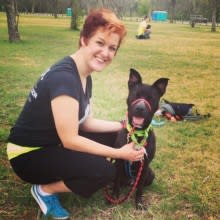 You’ve just walked in the door with your new best friend and your tummy does that flip-flop thingy. You’ve been home for less than 15 minutes and he’s already peed on the carpet, played roughly with every toy you bought, and now he’s running zoomies around the backyard with your wife’s favorite pair of underwear. You realize pretty quickly this ain’t no Teddy Ruxpin. This is an animal who in the days to come will likely make you laugh, sigh, want to shout at the top of your lungs (though we don’t recommend that), get out of bed early on Saturday morning, talk to your vet (who was a complete stranger before you walked into her office) about the color and consistency of poop, use that goofy baby voice so you can watch his head tilt from side to side, and make your foot do that little tappy thing your mom used to do to you. Your new dog comes with thoughts, opinions, feelings, habits and quirks that you didn’t necessarily think about amid the joyous ruckus at the shelter as you adopted the staff and volunteers’ favorite dog.
You’ve just walked in the door with your new best friend and your tummy does that flip-flop thingy. You’ve been home for less than 15 minutes and he’s already peed on the carpet, played roughly with every toy you bought, and now he’s running zoomies around the backyard with your wife’s favorite pair of underwear. You realize pretty quickly this ain’t no Teddy Ruxpin. This is an animal who in the days to come will likely make you laugh, sigh, want to shout at the top of your lungs (though we don’t recommend that), get out of bed early on Saturday morning, talk to your vet (who was a complete stranger before you walked into her office) about the color and consistency of poop, use that goofy baby voice so you can watch his head tilt from side to side, and make your foot do that little tappy thing your mom used to do to you. Your new dog comes with thoughts, opinions, feelings, habits and quirks that you didn’t necessarily think about amid the joyous ruckus at the shelter as you adopted the staff and volunteers’ favorite dog.
And now it hits you: “What have I gotten myself into?” And maybe also “How do I get my wife’s panties back in one piece without her knowing about this?”
 This post is supposed to be about bringing home a long-stay shelter dog (read Part 1 in the series), but truly, our advice to someone adopting any dog would be the same. It doesn’t matter if a dog has been at the shelter a week or a year, there’s going to be an adjustment period as you find a routine and structure that works for both of you. Your dog needs time to learn your habits, what’s allowed and not allowed, and develop the comfort and safety of knowing he’s in his forever home. Maybe he’s doing a few things you wish he wouldn’t, or he’s a little more energetic than you were prepared for, or maybe there’s some medical problems, or maybe even something came up in your life you weren’t expecting. It can be overwhelming; trust us, we totally understand (ahem, ahem, um, erg, cough). It’s also going to be more than worth any initial bumps in the road that will later become stories you tell with a smile.
This post is supposed to be about bringing home a long-stay shelter dog (read Part 1 in the series), but truly, our advice to someone adopting any dog would be the same. It doesn’t matter if a dog has been at the shelter a week or a year, there’s going to be an adjustment period as you find a routine and structure that works for both of you. Your dog needs time to learn your habits, what’s allowed and not allowed, and develop the comfort and safety of knowing he’s in his forever home. Maybe he’s doing a few things you wish he wouldn’t, or he’s a little more energetic than you were prepared for, or maybe there’s some medical problems, or maybe even something came up in your life you weren’t expecting. It can be overwhelming; trust us, we totally understand (ahem, ahem, um, erg, cough). It’s also going to be more than worth any initial bumps in the road that will later become stories you tell with a smile.
Time to Adjust
You can gauge the time it might take for your dog to fully acclimate to his home in threes: three days, three weeks, three months (Drs. London and McConnell)1. We think of that first 3 days (at a minimum) as the initial “detox period” as the dog transitions from the shelter to your home. Your home is a lot quieter than the shelter, with many more fun things around than a cement kennel, with more stimulating activity and space and freedom than a shelter can ever provide. It can be overwhelming for many dogs, especially those who have been in the loud, bustling shelter for months.
Your new dog may sleep a lot in those first few days (he probably didn’t get a lot of sleep with that dog next to him 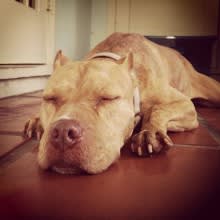 barking all day and night). He will want to check out all the new smells and investigate his new digs. He won’t know what you expect from him, that you are going to feed him twice a day, or where to go potty, or that the cat box is strictly off limits and so is the leg on that antique chair, by the way. After 3 weeks, though, your dog is probably getting used to your comings and goings, learning the daily routine, and starting to figure out when the next meal is coming, that you walk at the same time every morning, that he gets to go out for regular potty breaks. At 3 months, most dogs know they are “home.” It’s a process to get there, but with a good behavior plan, the right tools, patience and a sense of humor, the two of you can scale the mountain together and enjoy the journey toward a great relationship.
barking all day and night). He will want to check out all the new smells and investigate his new digs. He won’t know what you expect from him, that you are going to feed him twice a day, or where to go potty, or that the cat box is strictly off limits and so is the leg on that antique chair, by the way. After 3 weeks, though, your dog is probably getting used to your comings and goings, learning the daily routine, and starting to figure out when the next meal is coming, that you walk at the same time every morning, that he gets to go out for regular potty breaks. At 3 months, most dogs know they are “home.” It’s a process to get there, but with a good behavior plan, the right tools, patience and a sense of humor, the two of you can scale the mountain together and enjoy the journey toward a great relationship.
Things you might need
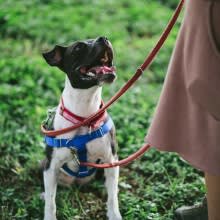 You’ll need a stock of supplies for your new dog, including:
You’ll need a stock of supplies for your new dog, including:
- Walking equipment:
- Leash: skip the retractable leash and go for a 6-ft durable nylon or leather leash. You’ll be glad you did.
- Collar: buckle or martingale, be sure you put tags with your current contact information.
- No pull equipment: The easiest way for your dog to learn to walk on a loose leash is never to let him pull to begin with. While walking on collar or harness is ideal, sometimes you need a little help getting there. We like the Freedom Harness, SENSE-ible Harness, Gentle leader, EZ walk harness, Holt head collar, and Halti, just to name a few. If you choose to use a head collar/halter on your dog, please do not let that be your only point of connection on the dog. Head collars are known to do significant damage to dogs’ necks and spines. Check with a skilled trainer to help you use these and any equipment you put on your dog.
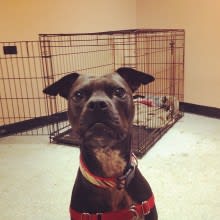 Plan on where the dog will sleep: Make a plan before your dog comes home for where he will sleep.
Plan on where the dog will sleep: Make a plan before your dog comes home for where he will sleep.
- Crate: Plastic or wire, in your bedroom or in the living room, your dog may need help adjusting to his crate. Most shelter dogs are used to life in a 6’x3′ kennel, not a smaller box. Take the time to crate train carefully and you will be thankful for a lifetime.
- His own bed: Not interested in using a crate? You can teach your dog to go to and stay in his own bed all night long. Reward him for going to his bed and ask him to lay down. Make sure it’s in a place that’s not too hot or too cool, and be sure to clear any chew toys or bones (unless you find the dulcet sounds of bone grinding help you sleep), and anytime your dog leaves his bed, ask him to return. You may find tethering your dog to a sturdy piece of furniture or closing your bedroom door helpful in the training stage. Oh, and if your dog is a chewer, be sure to pick up any items you really value.
 Your bed: Some trainers will tell you never to allow your dog in bed with you (or on the couch for that matter). Some trainers’ dogs sleep with them too. To our thinking, it is a personal preference; maybe you want a dog to cuddle with all night long. We suggest to do it with rules: the dog is only allowed on the bed when invited, must get down when told, and may not rudely possess the bed or keep anyone from joining him on the bed. If your dog growls at you or your significant other when he is on the bed, it is a good sign that maybe you have some work to do to help the dog earn the privilege. In this case, we recommend one of the first two options and work with a professional trainer to reclaim your space.
Your bed: Some trainers will tell you never to allow your dog in bed with you (or on the couch for that matter). Some trainers’ dogs sleep with them too. To our thinking, it is a personal preference; maybe you want a dog to cuddle with all night long. We suggest to do it with rules: the dog is only allowed on the bed when invited, must get down when told, and may not rudely possess the bed or keep anyone from joining him on the bed. If your dog growls at you or your significant other when he is on the bed, it is a good sign that maybe you have some work to do to help the dog earn the privilege. In this case, we recommend one of the first two options and work with a professional trainer to reclaim your space.
- Food: Start off right by buying your dog a high quality food that lists real meat as the first and even second ingredient. There have been numerous recalls on a variety of commercially available foods, including “high quality” foods. So which should you buy? The Whole Dog Journal regularly reviews and rates dry and canned foods, and we’re pretty big advocates of raw diets for dogs and cats as well.
- Good vet: Just like with your own doctor, it is important to choose a vet who you feel comfortable with, who shares or at least respects your attitude on pet health, and who can handle your dog with skill and patience even if your dog isn’t great about vet visits.
- Good trainer: Much like a good vet, you should choose a trainer whose advice you feel comfortable taking and with whom your dog feels comfortable. You are going to be paying the person a lot of money to help you with your dog. You need to feel like the advice you will receive is good, something you can carry out, and that if the advice doesn’t work, the trainer will listen to you respectfully and help you find a solution that does work.
 Toys: Dogs like a variety of toys to play with: something to chew, something to carry around and baby, and something to play actively or interactively. We love food puzzle toys, especially those where you and your dog play together. Check out this list of some of our favorites.
Toys: Dogs like a variety of toys to play with: something to chew, something to carry around and baby, and something to play actively or interactively. We love food puzzle toys, especially those where you and your dog play together. Check out this list of some of our favorites.- Treats: What kind of treats should you get and how should you use them? It’s important to use a treat whose value matches the situation. In the house, you can actually use your dog’s kibble as treats. Simply break up your dog’s daily ration for use at training times. You can also put portions around the house in “treat stations” so you can immediately provide a surprise reward when you catch your dog laying next to your shoe but chewing on his own bone. Reserve your special treats for out of the house, when you have to compete with all the lovely and smelly distractions of the world. Sometimes, you may even need to pull out the usually-forbidden human food for those moments when you need your dog’s undivided attention.
- Time to walk, train, and cuddle your new dog: Money can’t buy all the best things in life. Make sure before bringing home your new dog that you have the time and desire to spend doing the things you need to do to develop your relationship.
Setting the tone
The first 30 days after you bring your dog home is a critical time. You are setting the tone for your new relationship, and it’s so much easier to start out doing things how you want rather than try to make changes after Fido is already comfortable. That’s not to say that your relationship isn’t going to change and morph over time; but if you know you don’t want dog hair and slobber all over the couch, best to start off from Day One with the “no dogs on the couch” rule firmly in place.
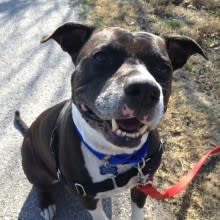 We recommend planning out a basic daily structure and routine, and a deciding on a few rules before you bring your new dog home. It always works out best if everyone who lives in the home has input and is aware of the rules, and agrees to follow them! This puts the humans (ALL the humans) in charge, and gives your dog the comfort of consistency and knowing what’s expected of him. Dogs like to know what to count on day in and day out; if you basically do the same things around the same times (walk, grooming, feeding, play time and cuddle time), your dog will settle in and relax faster.
We recommend planning out a basic daily structure and routine, and a deciding on a few rules before you bring your new dog home. It always works out best if everyone who lives in the home has input and is aware of the rules, and agrees to follow them! This puts the humans (ALL the humans) in charge, and gives your dog the comfort of consistency and knowing what’s expected of him. Dogs like to know what to count on day in and day out; if you basically do the same things around the same times (walk, grooming, feeding, play time and cuddle time), your dog will settle in and relax faster.
Not sure what some good rules might be? Here’s how we tend to break down rules in our homes:
 Rules that determine space and freedom: Using “functional rewards” can help establish good manners, set boundaries and clear expectations, provide structure, and facilitate a respectful relationship in your household. These are the things that your dog already wants to do: go out to potty, run around and be crazy, get in the car, sit next to you, etc. When you ask your dog to Sit and Wait at a door, the natural reward for complying is that he gets to go outside and do his business. But if every time you open the door your dog runs out without “asking,” not only do you risk injury to your knees and ankles and your dog risks injury if he runs into the street, but you lost an opportunity to reaffirm that in your relationship, you are the Giver of All Things Good. You have access to great resources, and you are sharing them. Examples of space and freedom rules might include:
Rules that determine space and freedom: Using “functional rewards” can help establish good manners, set boundaries and clear expectations, provide structure, and facilitate a respectful relationship in your household. These are the things that your dog already wants to do: go out to potty, run around and be crazy, get in the car, sit next to you, etc. When you ask your dog to Sit and Wait at a door, the natural reward for complying is that he gets to go outside and do his business. But if every time you open the door your dog runs out without “asking,” not only do you risk injury to your knees and ankles and your dog risks injury if he runs into the street, but you lost an opportunity to reaffirm that in your relationship, you are the Giver of All Things Good. You have access to great resources, and you are sharing them. Examples of space and freedom rules might include:
- spending some amount of time in the crate daily (whether you are home or not),
- wait at all doors (including car doors) until released,
- follow you up and down stairs (or wait at the top or bottom until released),
- 30 minutes on a mat or tether (perhaps in lieu of crate time),
- go to your Place while I’m eating,
- not allowed on furniture or beds for the first 30 days and never without invited,
- not allowed in at least 2 rooms of the house.
 Rules for eating: Structured feeding rituals are vital for multi-dog households, but they are important to the single dog house too. Rather than allowing your dog to “hunt” (find) his own food that you set down hours before when he was roaming the yard, you can use meal times as an opportunity to demonstrate that you are providing the Good Stuff your dog loves and needs. There is no clearer demonstration that you are the one taking care of business than offering food. This is also an excellent way to work on patience and self-control. By simply asking your dog to sit or lie down while you prepare his meal, stay while you place it before him, and wait to eat until you free him, you are creating a clear picture: “This is my food and I’m sharing it with you. All I’m asking is that you be polite and Say Please by Sitting.”2
Rules for eating: Structured feeding rituals are vital for multi-dog households, but they are important to the single dog house too. Rather than allowing your dog to “hunt” (find) his own food that you set down hours before when he was roaming the yard, you can use meal times as an opportunity to demonstrate that you are providing the Good Stuff your dog loves and needs. There is no clearer demonstration that you are the one taking care of business than offering food. This is also an excellent way to work on patience and self-control. By simply asking your dog to sit or lie down while you prepare his meal, stay while you place it before him, and wait to eat until you free him, you are creating a clear picture: “This is my food and I’m sharing it with you. All I’m asking is that you be polite and Say Please by Sitting.”2 Rules on Greeting: When you have been apart from your dog, what does that reunion sequence look like? When you leave your dog, what should that look like? This might seem like a little thing to you, but we think it’s a bigger thing to our dogs considering how they seem to behave the same whether we were gone 8 seconds or 8 hours. We recommend keeping your comings and goings low key, or as Kathy Cascade defines it, remain neutral or maintain some neutrality to this interaction with your dog. If you remain neutral at these times of separation and coming together, you can put your dog at ease that this is just a natural part of life and no big deal. It’s like a promise that you are coming back. We tend to handle coming home with a smile and whispered “Hi friends,” and then move on with our business until our dogs calm. Once he is truly settled, we might invite him over for some lovin’. That way we still get our fuzz therapy, and the dog gets the confidence of knowing that when we leave we will return and take care of him.
Rules on Greeting: When you have been apart from your dog, what does that reunion sequence look like? When you leave your dog, what should that look like? This might seem like a little thing to you, but we think it’s a bigger thing to our dogs considering how they seem to behave the same whether we were gone 8 seconds or 8 hours. We recommend keeping your comings and goings low key, or as Kathy Cascade defines it, remain neutral or maintain some neutrality to this interaction with your dog. If you remain neutral at these times of separation and coming together, you can put your dog at ease that this is just a natural part of life and no big deal. It’s like a promise that you are coming back. We tend to handle coming home with a smile and whispered “Hi friends,” and then move on with our business until our dogs calm. Once he is truly settled, we might invite him over for some lovin’. That way we still get our fuzz therapy, and the dog gets the confidence of knowing that when we leave we will return and take care of him.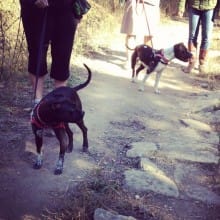 Rules for Walking: All of our hard work in the house isn’t going to mean much if we don’t have a few rules when we’re not at home. And at the same time, if we don’t have control over our dogs in the house, then we are woefully lost when we step out into the World of Distractions. It is easy enough to say “make sure your dog walks on a loose leash,” but there’s a lot that goes into that. There needs to be focus, self-control and engagement (from dog and human), trust and mutual respect, and your dog needs to care that you exist on the end of the leash (because no matter how hard you try, it is unlikely that you can ever go faster than your dog). From the moment you touch the leash to clip it to your dog’s collar, the activity should look calm and sane. If our dogs go bonkers when we touch the leash and are unable to follow our cues, we do not go out for a walk. We put the leash down, and wait until the dog settles. The same goes for the leashing process and exiting the door. And as for pulling on the leash, one of the simplest methods is “you pull on the leash, the walk stops.” There is no need to jerk or pull; when he figures out that the walk has stopped, he will look around at you to figure out why. When that slack goes into the leash, only then do we keep going. If your dog never pulls from Day One, he never thinks it is okay to do so.
Rules for Walking: All of our hard work in the house isn’t going to mean much if we don’t have a few rules when we’re not at home. And at the same time, if we don’t have control over our dogs in the house, then we are woefully lost when we step out into the World of Distractions. It is easy enough to say “make sure your dog walks on a loose leash,” but there’s a lot that goes into that. There needs to be focus, self-control and engagement (from dog and human), trust and mutual respect, and your dog needs to care that you exist on the end of the leash (because no matter how hard you try, it is unlikely that you can ever go faster than your dog). From the moment you touch the leash to clip it to your dog’s collar, the activity should look calm and sane. If our dogs go bonkers when we touch the leash and are unable to follow our cues, we do not go out for a walk. We put the leash down, and wait until the dog settles. The same goes for the leashing process and exiting the door. And as for pulling on the leash, one of the simplest methods is “you pull on the leash, the walk stops.” There is no need to jerk or pull; when he figures out that the walk has stopped, he will look around at you to figure out why. When that slack goes into the leash, only then do we keep going. If your dog never pulls from Day One, he never thinks it is okay to do so.
 Remember: what works for us might not work for you. Your lifestyle is unique to you, and the types of things you want out of your relationship are just as personal. Ian Dunbar wrote: “… I usually let owners decide on their own rules for their own dog. I consider household and lifestyle rules to be a very personal choice.” Don’t let someone else tell you that you absolutely must or must not do something with your dog. If you are happy with your relationship, if your dog follows your cues and you have control over him anytime you need, then you are already on the right track. Don’t change everything just because you think you need to add rules; chances are you already have established rules and consistency that your dog understands. By the same token, if you are unhappy with something in your dog’s behavior, then be willing to consider making a few changes either temporarily or permanently, to take back control of your relationship. It is likely that any good trainer or behaviorist will suggest this as the beginning of your training plan.
Remember: what works for us might not work for you. Your lifestyle is unique to you, and the types of things you want out of your relationship are just as personal. Ian Dunbar wrote: “… I usually let owners decide on their own rules for their own dog. I consider household and lifestyle rules to be a very personal choice.” Don’t let someone else tell you that you absolutely must or must not do something with your dog. If you are happy with your relationship, if your dog follows your cues and you have control over him anytime you need, then you are already on the right track. Don’t change everything just because you think you need to add rules; chances are you already have established rules and consistency that your dog understands. By the same token, if you are unhappy with something in your dog’s behavior, then be willing to consider making a few changes either temporarily or permanently, to take back control of your relationship. It is likely that any good trainer or behaviorist will suggest this as the beginning of your training plan.
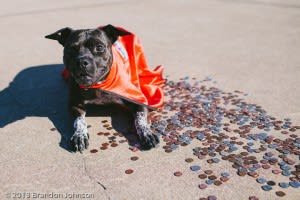 One benefit to having a dog who knows the rules and understands that working for you gets him all the good things is that he will start doing things specifically to see if you will reward him. Catch your dog doing something Good and make the most of those moments! If he’s chosen to lay on his spot rather than under the table while you eat, that’s a great decision. Reward that! If he’s chewing on his squeaky pengiun and not on the leg of the table, Terrific! Celebrate! You don’t need a grand reason to have fun with your dog, and catching him in the act of doing Good is a perfect moment turned training opportunity. What you’ll find is you have a dog who is willing to try things to see if he can get a reward. Training is always more fun with a dog like this, and you’ll find it builds a huge amount of confidence in him. We set up treat stations around the house with tasty, non-perishable goodies; whenever we notice a rewardable moment, treats are never far away and we can catch them in the act of being good. And if it’s something especially wonderful, Jackpot! Maybe the dog gets 10 little treats over the course of a minute while we shower him with praise and affection. This teaches him that doing the things you want him to do might just win him the lottery.
One benefit to having a dog who knows the rules and understands that working for you gets him all the good things is that he will start doing things specifically to see if you will reward him. Catch your dog doing something Good and make the most of those moments! If he’s chosen to lay on his spot rather than under the table while you eat, that’s a great decision. Reward that! If he’s chewing on his squeaky pengiun and not on the leg of the table, Terrific! Celebrate! You don’t need a grand reason to have fun with your dog, and catching him in the act of doing Good is a perfect moment turned training opportunity. What you’ll find is you have a dog who is willing to try things to see if he can get a reward. Training is always more fun with a dog like this, and you’ll find it builds a huge amount of confidence in him. We set up treat stations around the house with tasty, non-perishable goodies; whenever we notice a rewardable moment, treats are never far away and we can catch them in the act of being good. And if it’s something especially wonderful, Jackpot! Maybe the dog gets 10 little treats over the course of a minute while we shower him with praise and affection. This teaches him that doing the things you want him to do might just win him the lottery.
To train or not to train
Before you bring home your new dog, have an honest discussion with the members of your household about how much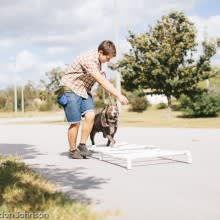 time you have to create and maintain a relationship with your dog, and the types of things you want to do with a dog. The easiest path is to choose a dog who would fit neatly into the lifestyle you already live. After the novelty of this new furry thing wears off, you are still going to have to walk, feed, train and interact with him. Think of things you’ve been doing for years; the things that you enjoy. Dogs come in all shapes, sizes and energy levels; there is a dog out there who will both fit with and enrich your lifestyle.
time you have to create and maintain a relationship with your dog, and the types of things you want to do with a dog. The easiest path is to choose a dog who would fit neatly into the lifestyle you already live. After the novelty of this new furry thing wears off, you are still going to have to walk, feed, train and interact with him. Think of things you’ve been doing for years; the things that you enjoy. Dogs come in all shapes, sizes and energy levels; there is a dog out there who will both fit with and enrich your lifestyle.
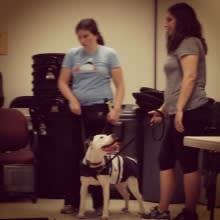 At the top of your list, write down the number of minutes or hours a day you will commit to training your dog. Be honest. When you adopt a dog, and if you are really in it for the long haul, there is the possibility he will need a few training classes, or visits with a private trainer, or even more extensive work into the future. Training is one of the most rewarding ways to develop a beautiful relationship with your dog; it can also be expensive, time consuming and on occasion, frustrating. Do you have the resilience, stubbornness and finances to keep going, either with a trainer or on your own? If not, are you willing to put management techniques in place, no matter how extensive they may be, to make living with an untrained dog doable? If the answer to these questions is “ummmmmmm,” then look for a dog who is less likely to require that kind of commitment. Ask a lot of questions, visit the dog a few times, ask if you can foster the dog or do an overnight visit, or even see if you can do a trial adoption. Shelter staff and volunteers usually have a good idea which are the easier vs more challenging dogs, and local trainers often offer dog selection assistance services. Use the knowledge of these people to help pick the right dog for you.
At the top of your list, write down the number of minutes or hours a day you will commit to training your dog. Be honest. When you adopt a dog, and if you are really in it for the long haul, there is the possibility he will need a few training classes, or visits with a private trainer, or even more extensive work into the future. Training is one of the most rewarding ways to develop a beautiful relationship with your dog; it can also be expensive, time consuming and on occasion, frustrating. Do you have the resilience, stubbornness and finances to keep going, either with a trainer or on your own? If not, are you willing to put management techniques in place, no matter how extensive they may be, to make living with an untrained dog doable? If the answer to these questions is “ummmmmmm,” then look for a dog who is less likely to require that kind of commitment. Ask a lot of questions, visit the dog a few times, ask if you can foster the dog or do an overnight visit, or even see if you can do a trial adoption. Shelter staff and volunteers usually have a good idea which are the easier vs more challenging dogs, and local trainers often offer dog selection assistance services. Use the knowledge of these people to help pick the right dog for you.
Training needs and options vary depending on the dog and you
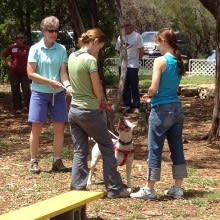 Training isn’t something you do for one month or the length of one class; every interaction you have with your dog is a training oppportunity. Dogs are sponges; they are always learning something (kind of a “passive” training). It’s important that with every interaction, you are teaching him what you want him to do. Pat Miller writes: “Think in Terms of What You Want Your Dog to Do, Not What You Want Him Not to Do.”3 Dogs are always doing what works for them. If jumping on you gets him attention (and what kind of attention doesn’t matter: touching, yelling, whatever; it’s all attention), then your dog will repeat that behavior. If jumping doesn’t work for you but does for everyone else in the house, your dog will continue to jump on the family members who allow it. But if jumping never works, and everyone always ignores him, then he will try a different behavior instead. This is your oppoortunity to teach him that a Sit gets him all the love and attention4, and jumping makes you go away. Every interaction is like this, and if you are always cognizant of what you are teaching your dog, your dog will understand and comply with what you want more quickly. This means less stress and frustration for everybody.
Training isn’t something you do for one month or the length of one class; every interaction you have with your dog is a training oppportunity. Dogs are sponges; they are always learning something (kind of a “passive” training). It’s important that with every interaction, you are teaching him what you want him to do. Pat Miller writes: “Think in Terms of What You Want Your Dog to Do, Not What You Want Him Not to Do.”3 Dogs are always doing what works for them. If jumping on you gets him attention (and what kind of attention doesn’t matter: touching, yelling, whatever; it’s all attention), then your dog will repeat that behavior. If jumping doesn’t work for you but does for everyone else in the house, your dog will continue to jump on the family members who allow it. But if jumping never works, and everyone always ignores him, then he will try a different behavior instead. This is your oppoortunity to teach him that a Sit gets him all the love and attention4, and jumping makes you go away. Every interaction is like this, and if you are always cognizant of what you are teaching your dog, your dog will understand and comply with what you want more quickly. This means less stress and frustration for everybody.
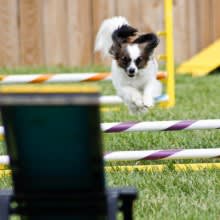 It helps to attend at least one training class, either to polish behavior or try a new game or sport or teach your dog a job. Here are some types of training classes your dog may benefit from:
It helps to attend at least one training class, either to polish behavior or try a new game or sport or teach your dog a job. Here are some types of training classes your dog may benefit from:
- How to behave in a house (some dogs have never lived in a home, or at least not in a really long time.)
- Basic obedience
- Agility, Treiball, Hiking, Rally Obedience, Tracking, etc.
- CGC
- Confidence Building
- Reactive Dog class
Training Options
There’s no set method you have to use to train your dog:
- DIY: books, magazines, blog posts, videos, tv shows: There’s no reason you can’t train your dog at home. With the abundance of information available from well-known and respected trainers and behaviorists in print, on the internet or on TV, you can gather enough knowledge and ideas at least to teach your dog the basics. From Patricia McConnell (here or here or here) to Dog Star Daily to It’s Me or the Dog, the tools are out there to do a pretty good DIY job yourself. We strongly recommend you stick with methods that use positive, relationship-building techniques, such a lure and reward with treats, play training, or function reward-based training like BAT.
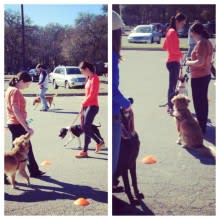 Group class: Group classes are a good option for dogs who already have a good behavior foundation or previous training experience. Dogs who do best in group class already have some amount of focus and self-control, can handle a moderate amount of distraction and are ready and eager to play this new game with you as long as you keep shoveling the treats in his mouth. These dogs also have owners who practice throughout the week between classes and had a pretty good idea before they started what they wanted to get out of the class. Group classes are not always as beneficial for dogs who have serious problems with barking, reactivity, aggression (perceived or real), or lack of self-control. These dogs often are mislabeled early on in class, can be ostracized by the trainer or other owners or even kicked out. Not great when you paid a lot of money and needed a lot of help.
Group class: Group classes are a good option for dogs who already have a good behavior foundation or previous training experience. Dogs who do best in group class already have some amount of focus and self-control, can handle a moderate amount of distraction and are ready and eager to play this new game with you as long as you keep shoveling the treats in his mouth. These dogs also have owners who practice throughout the week between classes and had a pretty good idea before they started what they wanted to get out of the class. Group classes are not always as beneficial for dogs who have serious problems with barking, reactivity, aggression (perceived or real), or lack of self-control. These dogs often are mislabeled early on in class, can be ostracized by the trainer or other owners or even kicked out. Not great when you paid a lot of money and needed a lot of help.- Private training: Private lessons – either at a training facility or in your home – are meant to address specific issues and create a unique individual training plan for your dog. This is an excellent option for dogs with the above-mentioned serious problems, who have issues that a group class wouldn’t address, or when the owner doesn’t have time to devote to the length of a group class. The drawbacks of private lessons are they can be expensive and you are missing out on all the great interactions, distractions, and learning from others that come in a group class setting.
Whether you decide on a group class or private lessons, it’s often best to wait a few weeks and develop a relationship with your new dog before beginning. This will allow you time to figure out what you want to work on and to start developing your relationship so you will have some control over your dog in class. If your dog hasn’t bonded to you yet, he will be less likely to want to work for you when there’s other more interesting things around.
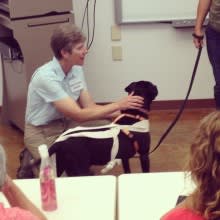 We cannot stress enough the importance of choosing a trainer who shares your training philosophy. We have met too many people whose experiences were ruined either because they were uncomfortable with the trainer’s techniques and were unwilling or unable to carry them out, or because they did follow the trainer’s advice and it either didn’t work for them, hurt their relationship with their dog or had other long-lasting negative consequences. The most important thing is that your interactions – every interaction – works to build up and strengthen your bond with your dog. If someone tells you to do something with your dog you are not comfortable with, speak up. Ask for a different solution or sit out that particular activity. The best trainers are great problem solvers and should have multiple techniques to achieve the same results.
We cannot stress enough the importance of choosing a trainer who shares your training philosophy. We have met too many people whose experiences were ruined either because they were uncomfortable with the trainer’s techniques and were unwilling or unable to carry them out, or because they did follow the trainer’s advice and it either didn’t work for them, hurt their relationship with their dog or had other long-lasting negative consequences. The most important thing is that your interactions – every interaction – works to build up and strengthen your bond with your dog. If someone tells you to do something with your dog you are not comfortable with, speak up. Ask for a different solution or sit out that particular activity. The best trainers are great problem solvers and should have multiple techniques to achieve the same results.
Take advantage of any training packages or scholarship money that came with your dog and remember that there are people ready to help. DOL dogs come with a take-home plan, a free in-home visit within the first 60 days of adoption, a free training class and a lifetime of support.
What to do when you have problems
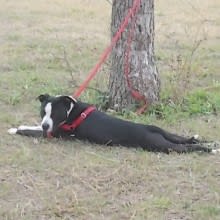 So you got home and maybe the first day or week or even month was great, but now it’s getting rough. Maybe you are getting frustrated or worried, and you are not sure what to do. Don’t worry; you are in the same boat a lot of owners of new-to-them-dogs are in.
So you got home and maybe the first day or week or even month was great, but now it’s getting rough. Maybe you are getting frustrated or worried, and you are not sure what to do. Don’t worry; you are in the same boat a lot of owners of new-to-them-dogs are in.
First, take a deep breath and relax. It’s okay to feel frustrated or unsure or worried. Problems were bound to come up and you are not expected to have all the answers. Bringing home a new dog has its rewards and challenges, and it’s very likely your dog is in a situation he hasn’t been in before. Take a mental and even physical step back and decide how to proceed.
Use the resources available to you (remember that training scholarship and all those people at the shelter who loved that dog? They’re a good place to start.) and create a plan. Without a plan, you are just fumbling around in the dark getting more and more frustrated. Many adoption packets have some basic problem solving handouts included. Check out a few of the DIY training resources mentioned above.
Think about what is going wrong. Breaking the situation down as Paul Owens suggests can help alleviate frustation.5 When and where does the behavior happen? Try to decide what is causing the problem: Is the dog hungry, thirsty, stressed, sick, bored? Does he simply not know what to do?  Then, think about what the picture would look like if the dog was doing what you want him to do (sit instead of jumping, lay quietly instead of barking at the mailman, go outside instead of going on the carpet). The best way to solve a problem is first to think of what your ideal picture of the situation would look like. Then break down training the behavior into smaller steps to achieve your goal. Focus on what you DO want your dog to do (so think “I want him to Sit” rather than “I don’t want him to Jump.” You can’t teach your dog all the things in the world you don’t want him to do). Maybe you need to redirect your dog to an appropriate activity (chew this bone instead of my shoe), maybe you need to pay closer attention to the time and let your dog out sooner, maybe you need to hire a trainer to help you with your reactive dog. Every problem has a solution; how quickly you get there depends on how quickly you identify the cause of the problem, eliminate the reward that comes with doing the problem behavior, and ensure that the dog only finds reward in doing the behavior you want.
Then, think about what the picture would look like if the dog was doing what you want him to do (sit instead of jumping, lay quietly instead of barking at the mailman, go outside instead of going on the carpet). The best way to solve a problem is first to think of what your ideal picture of the situation would look like. Then break down training the behavior into smaller steps to achieve your goal. Focus on what you DO want your dog to do (so think “I want him to Sit” rather than “I don’t want him to Jump.” You can’t teach your dog all the things in the world you don’t want him to do). Maybe you need to redirect your dog to an appropriate activity (chew this bone instead of my shoe), maybe you need to pay closer attention to the time and let your dog out sooner, maybe you need to hire a trainer to help you with your reactive dog. Every problem has a solution; how quickly you get there depends on how quickly you identify the cause of the problem, eliminate the reward that comes with doing the problem behavior, and ensure that the dog only finds reward in doing the behavior you want.
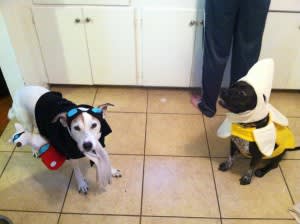 And maybe most important of all: Keep your sense of humor. Sometimes just letting go and having a good laugh at the dog who is running zoomies with your underwear is the best way to get over frustration and start enjoying your dog. Dogs are clowns with beautiful thoughts and ideas and humor all their own. Who knows, maybe he was trying to make you laugh? Dogs teach us how to let go of our preconceived plans and ideas and how to go with the flow. Take this opportunity to see things from your dog’s perspective and figure out how to use what he wants to do as a reward.
And maybe most important of all: Keep your sense of humor. Sometimes just letting go and having a good laugh at the dog who is running zoomies with your underwear is the best way to get over frustration and start enjoying your dog. Dogs are clowns with beautiful thoughts and ideas and humor all their own. Who knows, maybe he was trying to make you laugh? Dogs teach us how to let go of our preconceived plans and ideas and how to go with the flow. Take this opportunity to see things from your dog’s perspective and figure out how to use what he wants to do as a reward.
You are never done developing a relationship with your dog
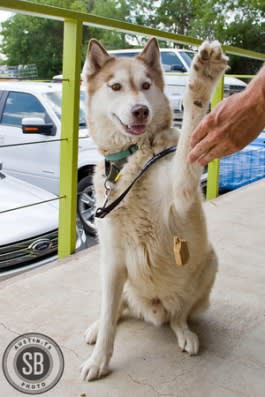 Dogs are resilient creatures; what happened to them yesterday doesn’t have to dictate what they become in the future. You can always work to mold and shape your relationship with your dog into something that gets better and better with age. Relationships are like gardens: they can look and smell like the most beautiful of sanctuaries, but only if the plants and soil are tended regularly. Gardens can get weedy and die off fast. But with a little daily maintenance, you have something beautiful to appreciate for all the love and effort that went into it. So it is with your relationship with your new dog. Put in the work and effort, but never forget to stop and enjoy how far you’ve come. When you set reasonable expectations that both of you can meet, it’s a satisfying experience and motivates you to reach another peak. Enjoy all the scenery and beauty the climb to the top has to offer; it’s the most important lesson dogs have to teach us.
Dogs are resilient creatures; what happened to them yesterday doesn’t have to dictate what they become in the future. You can always work to mold and shape your relationship with your dog into something that gets better and better with age. Relationships are like gardens: they can look and smell like the most beautiful of sanctuaries, but only if the plants and soil are tended regularly. Gardens can get weedy and die off fast. But with a little daily maintenance, you have something beautiful to appreciate for all the love and effort that went into it. So it is with your relationship with your new dog. Put in the work and effort, but never forget to stop and enjoy how far you’ve come. When you set reasonable expectations that both of you can meet, it’s a satisfying experience and motivates you to reach another peak. Enjoy all the scenery and beauty the climb to the top has to offer; it’s the most important lesson dogs have to teach us.
Sources
- Love Has No Age Limit, Drs. Karen London and Patricia McConnell, p. 55
- Say Please by Sitting, Dr. Sophia Yin.
- The Power of Positive Dog Training (p. xiv)
- Not to harp on Say Please by Sitting, but this is a good example of the idea in practice.
- The Dog Whisperer: A Compassionate, Nonviolent Approach to Dog Training, 2nd Edition, Paul Owens
